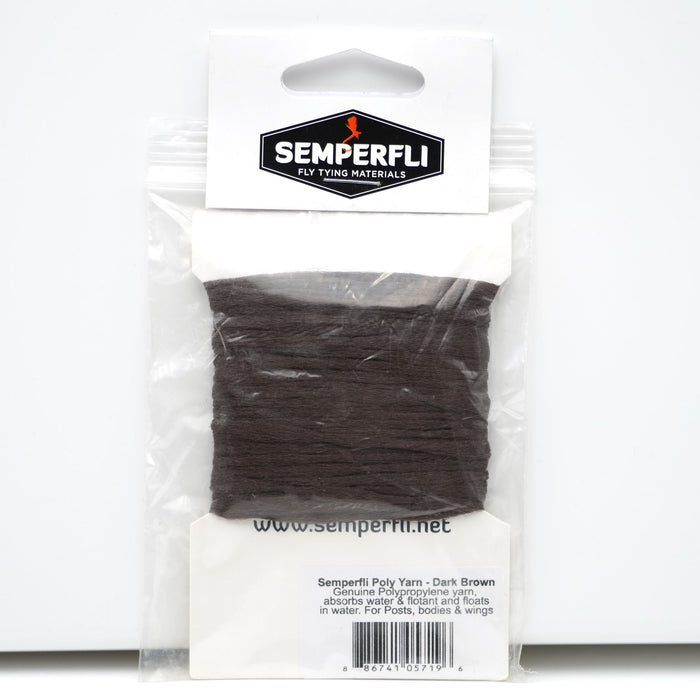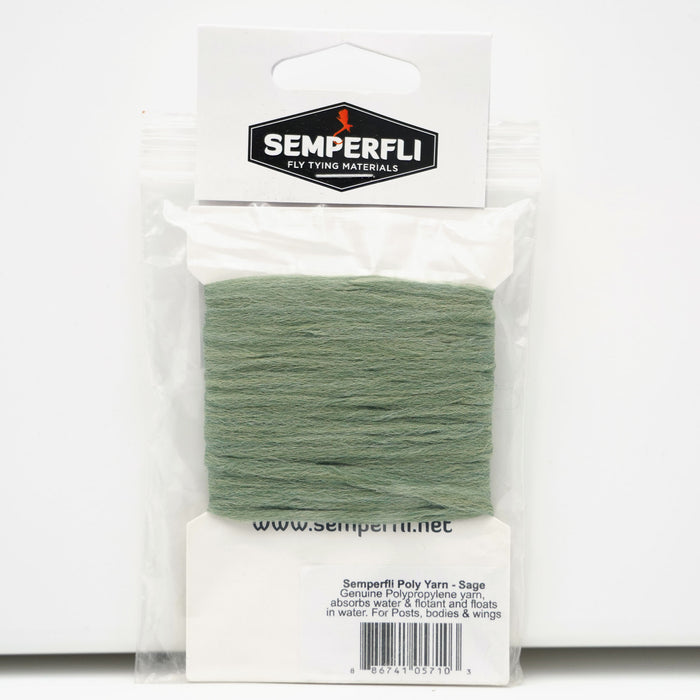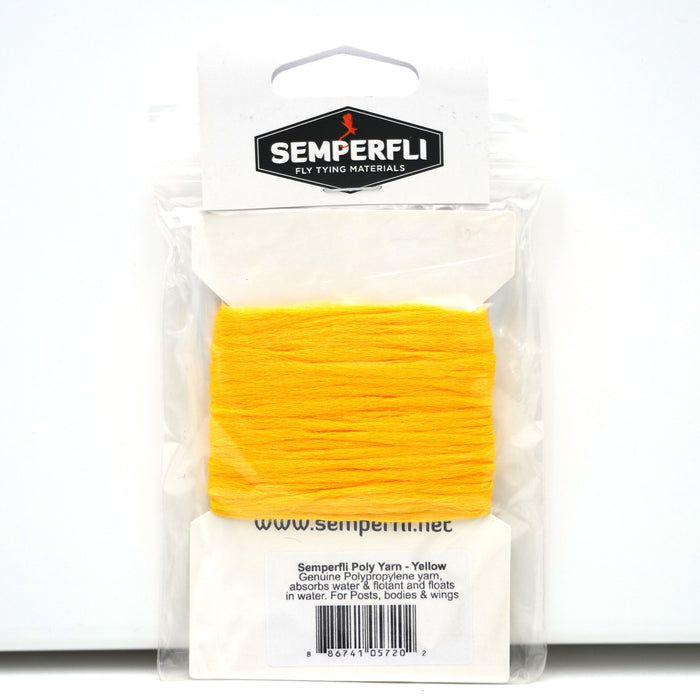
SemperFli Poly Yarn
For posts, bodies and wings.

Poly Yarn has a density rating of .94, which is less than the density of water at 1. This is extremely beneficial to tying dry flies because it doesn't add any un necessary weight to your fly. Poly yarn will absorb water, which means it will sink it not treated, however Semperfli pre treats theirs for superior performance. If treated with a quality floatant, which it absorbs equally well, it will float very high and dry for you. This is the floatant we prefer and use for all our dry flies

It works great for tying all kinds of dry fly wings

Split Wing dries

Cripple Patterns

Hair Wing

-----
Background To Polypropylene By Hans Van Klinken
Polypropylene or “poly” is a lighter-than-water polymer material available in spun fiber or yarn form. It is excellent for dry fly bodies and wings, and particularly useful as spent wings in dry fly spinners. It can also be used for nymphs or as streamer wings if tied on heavier hooks. It is available in a wide variety of colors, textures and fiber thickness. as with all of the Semperfli materials out polypropylene is fine and perfect for tying flies.
Polypropylene is a thermoplastic polymer and was discovered in the early 1950s by an Italian textile consultant and chemist by the name of Guilio Natta. He even won a Nobel Prize in Chemistry in 1963, together with Karl Ziegler, for their work on high polymers. Polypropylene managed to survive the legal process, and two American chemists working for Phillips Petroleum, J. Paul Hogan and Robert Banks, are now generally credited as the “official” inventors of the material.
It is a fiber with a specific gravity of .94, whose end uses are clothing, carpeting, industrial fabrics, transparent plastic sheeting, film and even Australian banknotes. It is also used to make packaging material, plastic bottles, textiles, luggage, ropes that float, and is additionally used for items that must be sterilized, due to its high melting point (250°F/121°C). It is also resistant to bacterial growth, making it suitable for disposable syringes and other medical equipment. Much of the poly fiber on the market today is polyolefin, in which the fiber-forming substance is any long chain synthetic polymer, composed of at least 85 propylene.
In the fly tying material market, Doug Swisher and Carl Richards made the first mention of poly fiber in their book entitled Selective Trout. They felt its specific gravity was extremely important for dry flies. It is a consideration that has been debated many times, and may or may not be true. We fully agree with them, no matter what others would say, but remember our words very well now: poly yarn tied on a hook has to be treated with a high quality floatant or the fly will sink easily when the poly catch water and the extra weight will pull a fly down rather quickly. Poly Yarn absorbs water extremely well so it also will absorbs a floatant real good what also easily makes it water resistant too.
Polypropoylene Test
Because there are many various materials which are sold as poly yarn, it is wise to do a simple test before buying it. Cut off a small piece of yarn and make a small pellet. Drop it in a dish of water and check if it remains floating on and stays the surface film. Unless it floats, such an inferior yarn will be useless, not only for the Racklehanen, but for several other types of dry flies as well. Many fly tiers who are not familiar with materials, will use a yarn or dubbing for floating flies which sinks straight to the bottom. Therefore, it is seriously recommend doing this test if you try other polypropylene materials. We have of course tested Semperfli polypropylene.

















